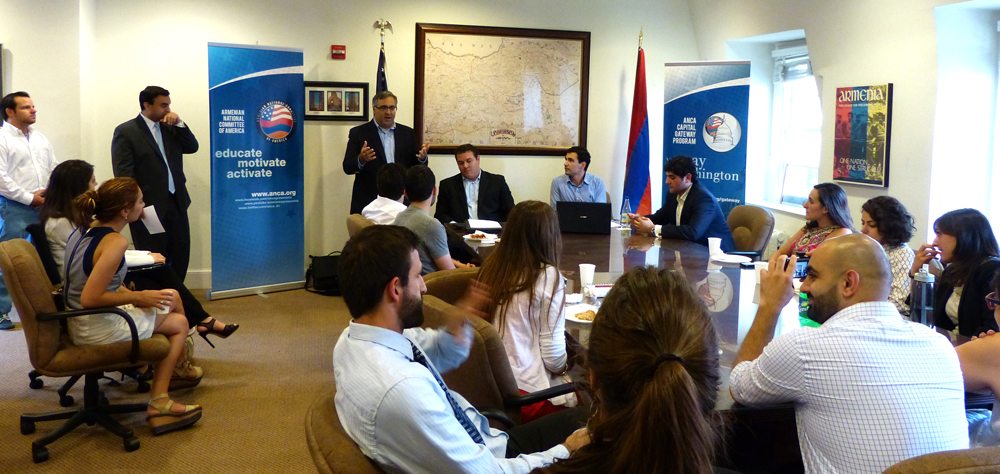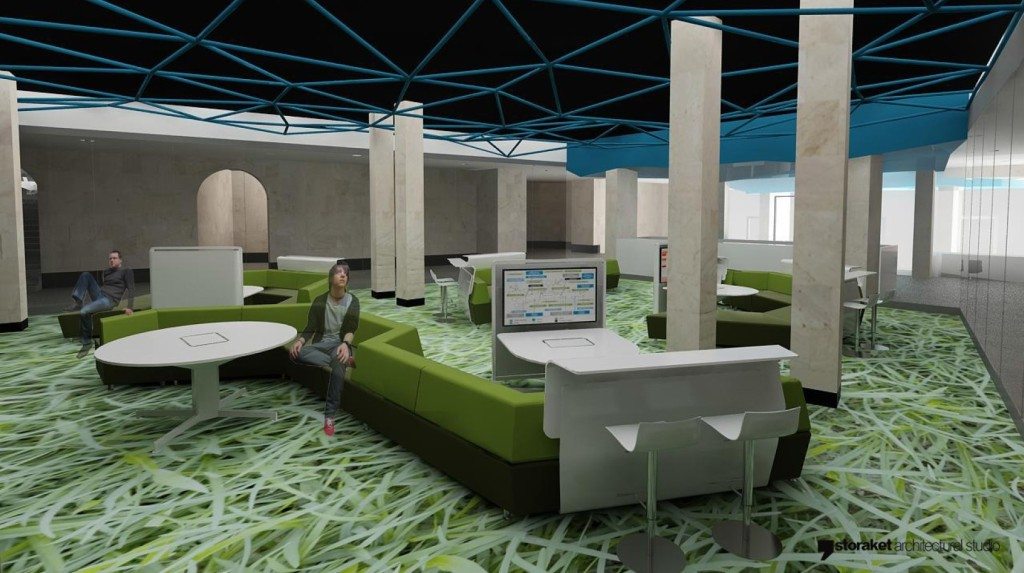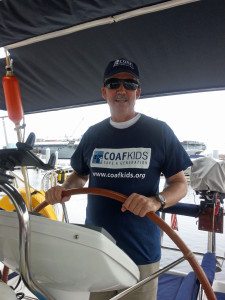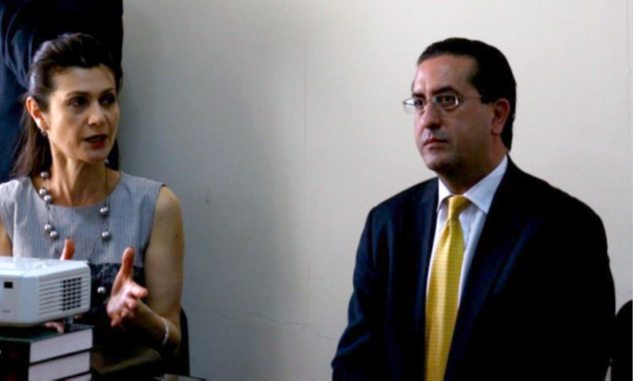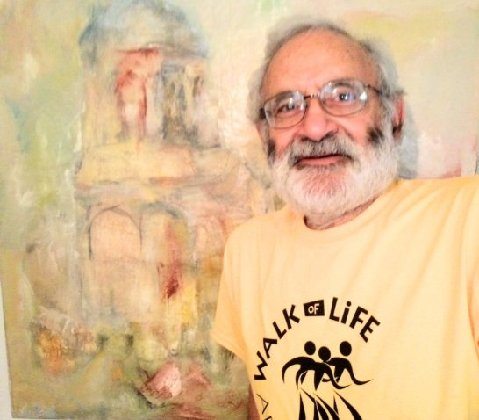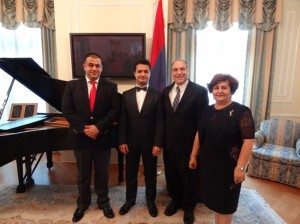WATERTOWN, Mass.—St. Stephen’s Armenian Elementary School (SSAES) successfully completed its 30th academic year last month. The Graduation Ceremonies were held on June 19 (Kindergarten) and June 20 (Elementary).
![Grade 5 graduates with (L-R) Ardemis Megerdichian, Principal Houry Boyamian, Rev. Archpriest Antranig Baljian, Mark Boylan]()
Grade 5 graduates with (L-R) Ardemis Megerdichian, Principal Houry Boyamian, Rev. Archpriest Antranig Baljian, Mark Boylan
On both days, Principal Houry Boyamian focused on the school’s achievements, especially on its STEM Initiative (Science, Technology, Engineering, and Math) and the Graduating Class Trip to Armenia. She thanked the faculty, administrative staff, PTO, parent volunteers, school board and committees, the St. Stephen’s Church board of trustees, Rev. Fr. Archpriest Antranig Baljian, as well as all the organizations and individuals that have contributed to the advancement of the school.
On June 19, she honored three educators: Preschool director Maral Orchanian and
![(L-R) Principal Houry Boyamian, Araxie Poladian, and Rev. Archpriest Antranig Baljian. Poladian is retiring after serving as a preschool teacher for 44 years in Armenian schools; 15 of those years were at SSAES.]()
(L-R) Principal Houry Boyamian, Araxie Poladian, and Rev. Archpriest Antranig Baljian. Poladian is retiring after serving as a preschool teacher for 44 years in Armenian schools; 15 of those years were at SSAES.
Nursery I teacher Anna Kupelian, who received the school’s Golden Logo for their 15 years of dedicated service; and Araxie Poladian, who will be retiring after 21 years of dedicated service at SSAES as a Nursery II teacher. Poladian has taught in Armenian schools for a total of 44 years, and received a Certificate of Appreciation from the Armenian Prelacy signed by Archbishop Oshagan Choloyan, as well as a Proclamation from Massachusetts Governor Deval Patrick. Boyamian announced that the school has established the Araxie Poladian Scholarship Fund in her honor. Three former students, Serena Hajjar, Armine Afeyan (on June 19), and Nairi Krafian (on June 20), presented their memories of Mrs. Poladian’s Nursery II classroom. Readers who would like to express their appreciation to Poladian may send their contribution to the school at 47 Nichols Avenue, Watertown, MA 02472 (Attention: Araxie Poladian Scholarship Fund).
![Principal Houry Boyamian and Heather Krafian honoring Ardemis Megerdichian for her 15 years of dedicated service as Grades 1-5 Armenian teacher.]()
Principal Houry Boyamian and Heather Krafian honoring Ardemis Megerdichian for her 15 years of dedicated service as Grades 1-5 Armenian teacher.
On June 20, Boyamian also honored Ardemis Megerdichian with the school’s Golden Logo for her 15 years of dedicated service as Grades 1-5 Armenian teacher. She focused on Megerdichian’s important role in developing the students’ sense of national identity and pride in their heritage. The elementary school graduation program was dedicated to “our Elders,” as His Holiness Aram I has proclaimed 2014 “The Year of our Elders.” The second part of the program was dedicated to Armenia. The elementary students presented both themes with poetry recitals and chorale songs, followed by a video presentation of the Grade 5 Class Trip to Armenia, coordinated with great expertise by Megerdichian.
On both days, Archpriest Antranig Baljian expressed his appreciation to the administration and faculty for their dedication and effort.
On June 19, 27 students graduated from Kindergarten. They are Vartan Arakelian, Andre Bashirians, Frieda Bilezikian, Julia Chapian, Lara Chekijian, Jake Gobbi, Sonya Haleblian, Gacia Haserjian, Saro Iskenderian, Anais Kahvejian, Lea Karapetian, Harout Keledjian, Michael Mahtesyan, Samuel Makarian, Narineh Mardiros, Sarine Markarian, Zulal Merdinoglu, Gassia Minassian, Nareg Minassian, Nicholas Nalbandyan, Arin Nazarian, Vicken Panian, Alla Petrosyan, Lory Simon, Arinne Stepanian, Sophia Tinkjian, and Armen Vartanian.
On June 20, 10 students graduated from the Elementary School. They are Antranig Atinizian, Isabella Balian, Berj Chekijian, Lori Ganjian, Shant Karamousayan, Knar Krafian, Elizabeth Krmzian, Ani Ourfalian, Garen Sahakian, and Gacia Vosbigian.
![The 2014 Kindergarten graduates]()
The 2014 Kindergarten graduates
Awards 2014
Grade 5 Awards for Excellence in Armenian Studies:
Prelacy Award: Isabella Balian, Lori Ganjian, Gacia Vosbigian, and Shant Karamousayan.
Armenian Relief Society (ARS) Award: Berj Chekijian.
St. Stephen’s School Award: Elizabeth Krmzian, Garen Sahakian, Ani Ourfalian, Knar Krafian, and Antranig Atinizian.
The Presidential Award for Academic Excellence: Isabella Balian and Knar Krafian. (The purpose of this award is to recognize the academic success of students who have excelled in their studies and who have earned high scores on standardized tests.)
The Presidential Award for Academic Achievement: Lori Ganjian and Gacia Vosbigian. (The purpose of this award is to reward students who work hard and give their best effort in school.)
American Citizenship Award: Antranig Atinizian. (This award recognizes students who show a positive attitude toward classmates, school, and community; display an understanding and appreciation of civic responsibility; and possess strength of character and the courage to do what is right.)
Grade 5 Special Strengths:
Achievements in Mathematics: Berj Chekijian, Ani Ourfalian, and Shant Karamousayan.
Achievements in Writing Composition: Elizabeth Krmzian.
Achievements in Social Studies: Garen Sahakian.
Achievements in Science: Antranig Atinizian.
ARS Essay Contest:
2nd Place: Elizabeth Krmzian.
3rd Place: Ani Ourfalian, Lori Ganjian.
Nishan and Arshalouys Scholarship Fund for Music and Art (Grade 4, $200 each):
Music: Nareg Minassian.
Art: Talar Panossian.
Anahid Kazazian Scholarship ($100 each):
Chris Ashjian and Benjamin Surenian.
Perfect Attendance Award:
Aren Panian (Grade 2).
The post St. Stephen’s Elementary Holds Graduation Ceremonies appeared first on Armenian Weekly.

